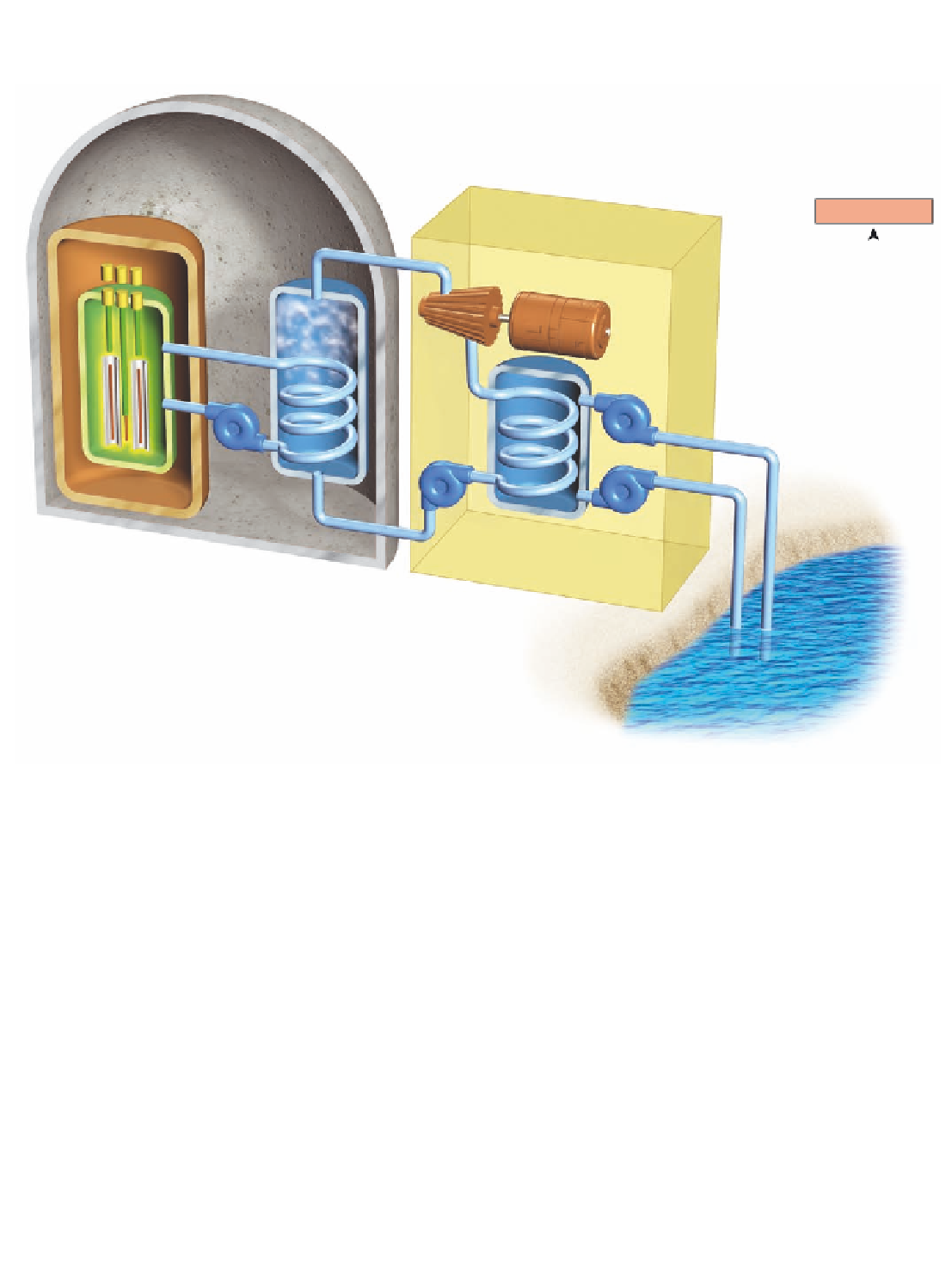Environmental Engineering Reference
In-Depth Information
Small amounts of
radioactive gases
Uranium
fuel input
(reactor core)
Control rods
Containment shell
Heat exchanger
Steam
Turbine
Generator
Electric power
Waste heat
Hot
coolant
Useful energy
25%-30%
Hot
water
output
Coolant
Waste heat
Moderator
Cool
water
input
Shielding
Pressure
vessel
Coolant
passage
Water
Condenser
Periodic removal and
storage of radioactive
wastes and spent
fuel assemblies
Periodic removal
and storage of
radioactive
liquid wastes
Water source
(river, lake, ocean)
Figure 13-17
Science:
light-water-moderated and -cooled nuclear power plant with a pressurized water
reactor. Some plants use huge cooling towers to transfer some of the waste heat to the atmosphere.
In the 1950s, researchers predicted that by 2000 at least
1,800 nuclear power plants would supply 21% of the
world's commercial energy (25% in the United States)
and most of the world's electricity.
After almost 50 years of development, enormous
government subsidies, and an investment of $2 tril-
lion, these goals have not been met. Instead, in 2004,
439 commercial nuclear reactors in 30 countries were
producing only 6% of the world's commercial energy
and 16% of its electricity.
Since 1989, electricity production from nuclear
power has increased only slightly and is now the
world's slowest-growing energy source. According to
the DOE, the percentage of the world's electricity pro-
duced by nuclear power is projected to fall to 12% by
2025, compared to 16% in 2003, because the retirement
of aging plants is expected to exceed the construction
of new ones.
No new nuclear power plants have been ordered
in the United States since 1978, and all 120 plants or-
dered since 1973 have been canceled. In 2004, there
were 103 licensed commercial nuclear power reactors
in 31 states—most of them located in the eastern half
of the country. These reactors generate about 21% of
the country's electricity and 8% of its total energy. This
percentage is expected to decline over the next two
decades as existing plants wear out and are retired.
According to energy analysts and economists, sev-
eral reasons explain the failure of nuclear power to
grow as projected. They include multibillion-dollar
construction cost overruns, higher operating costs and
more malfunctions than expected, and poor manage-
ment. Two other obstacles have been public concerns
about safety and stricter government safety regula-
tions, especially after the accidents in 1979 at the Three
Mile Island nuclear plant in Pennsylvania and in 1986



































